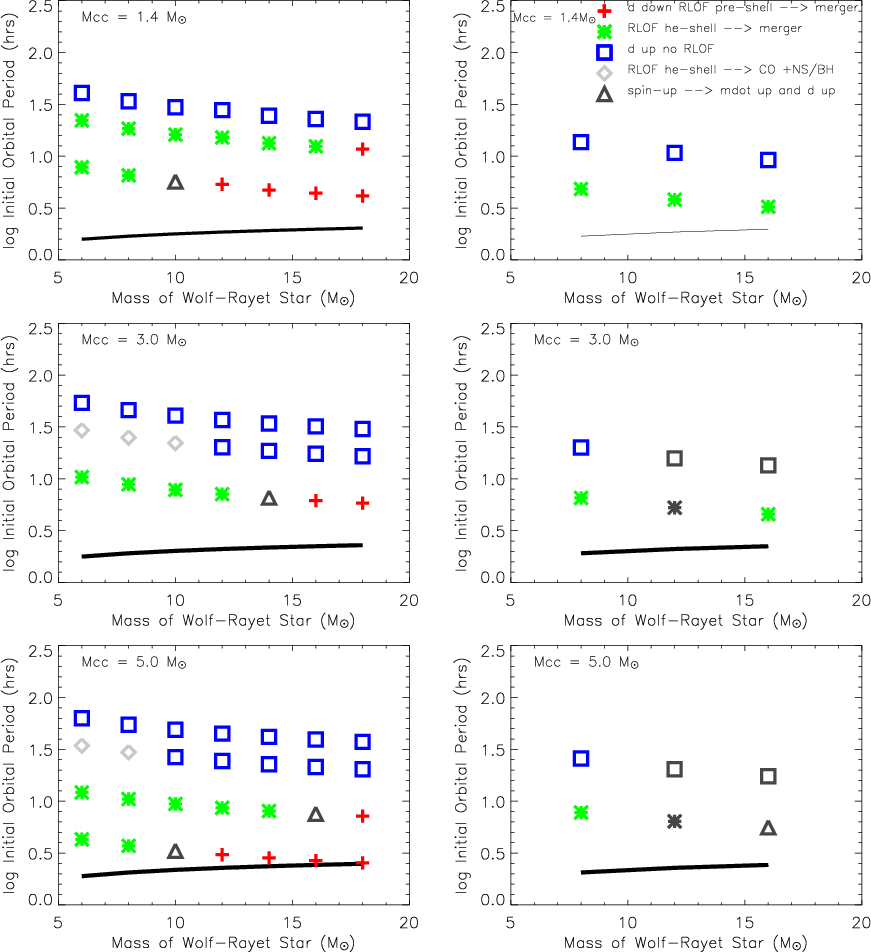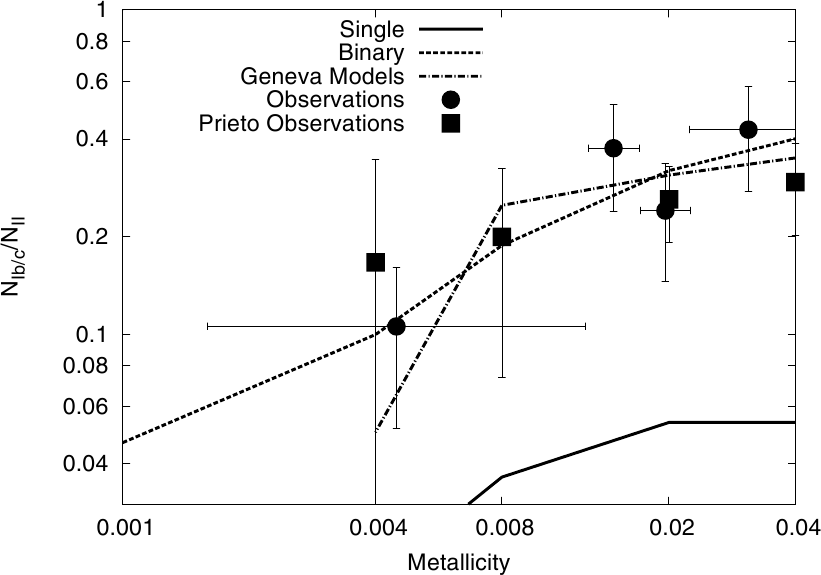| Fluorine in carbon-enhanced metal-poor stars: a binary scenario |
| M. Lugaro, S. E. de Mink, R. G. Izzard, S. W. Campbell, A. I. Karakas, S. Cristallo, O. R. Pols, J. C. Lattanzio, O. Straniero, R. Gallino, T. C. Beers |
| A super-solar fluorine abundance was observed in the carbon-enhanced metal-poor (CEMP) star HE 1305+0132 ([F/Fe]=+2.90, [Fe/H]=-2.5). We propose that this observation can be explained using a binary model of mass transfer from an asymptotic giant branch (AGB) star companion. |
 |
Fluorine vs (Carbon+Nitrogen) for HE 1305+0132 vs that in our models. |
|
| Astronomy and Astrophysics, Volume 484, Issue 3, 2008, pp.L27-L30 |
| Gamma-Ray Bursts from tidally spun-up Wolf-Rayet stars? |
| R. G. Detmers, N. Langer, Ph. Podsiadlowski, R.G. Izzard |
| The outcome of the evolutionary calculations for helium star-compact object binaries with two different mass-loss rates. |
 |
|
The collapsar model requires rapidly rotating Wolf-Rayet stars as progenitors of long gamma-ray bursts. However, Galactic Wolf-Rayet stars rapidly lose angular momentum due to their intense stellar winds. We find that the simple scenario - i.e., the Wolf-Rayet star being tidally spun up and producing a collapsar - does not occur at solar metallicity and may only occur with low probability at low metallicity.
|
| Astronomy and Astrophysics, Volume 484, Issue 3, 2008, pp.831-839 |
| The effect of massive binaries on stellar populations and supernova progenitors |
| J. J. Eldridge, R. G. Izzard and C. A. Tout. |
| We have calculated a large set of detailed binary models and tested them against observed stellar populations to compare the number of blue/red supergiants and Wolf-Rayet stars at different metallicities. We have also estimated the relative rate of type Ib/c to type II supernovae. We find, with an interacting binary fraction of about two thirds, that we obtain better agreement between our models and observations than with single stars. |
 |
Supernova type Ib/c to type II ratio for single vs binary stars and compared to observations for our models and those of the Geneva group. |
|
Published in MNRAS, Vol. 384, pp. 1109
Massive Stars as Cosmic Engines, Proceedings of IAU Symposium 250, pp.179-184
|
| The Mysterious R Stars |
| R. G. Izzard, C. S. Jeffery, J. Lattanzio |
| The R stars are a rare class of K-type giant carbon stars. Canonical stellar evolutionary theory cannot explain their existence, yet they have been observed for more than a century. The early-R stars, the warmest in the R class, are enhanced in 12C, 13C and 14N relative to the Sun, but not in s-processes elements or oxygen, and are all single stars. We test the idea that binary mergers lead to the formation of the early-R stars by a comparison of binary population synthesis model results with observations. |
| Proceedings of the IXth Torino Workshop on AGB Stars, Perugia, 2008 |
| Modelling the evolution and nucleosynthesis of carbon-enhanced metal-poor stars |
| O. R. Pols, R. G. Izzard, M. Lugaro, S. E. de Mink |
| We present the results of binary population simulations of carbon-enhanced metal-poor (CEMP) stars. We show that nitrogen and fluorine are useful tracers of the origin of CEMP stars, and conclude that the observed paucity of very nitrogen-rich stars puts strong constraints on possible modifications of the initial mass function at low metallicity. The large number fraction of CEMP stars may instead require much more efficient dredge-up from low-metallicity asymptotic giant branch stars. |
| The Art of Modeling (sic) Stars in the 21st Century, Proceedings of IAU Symposium 252 |

